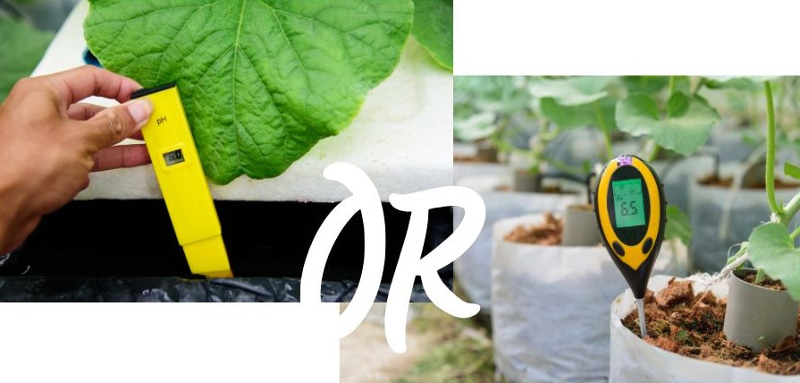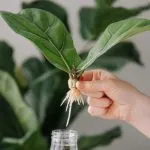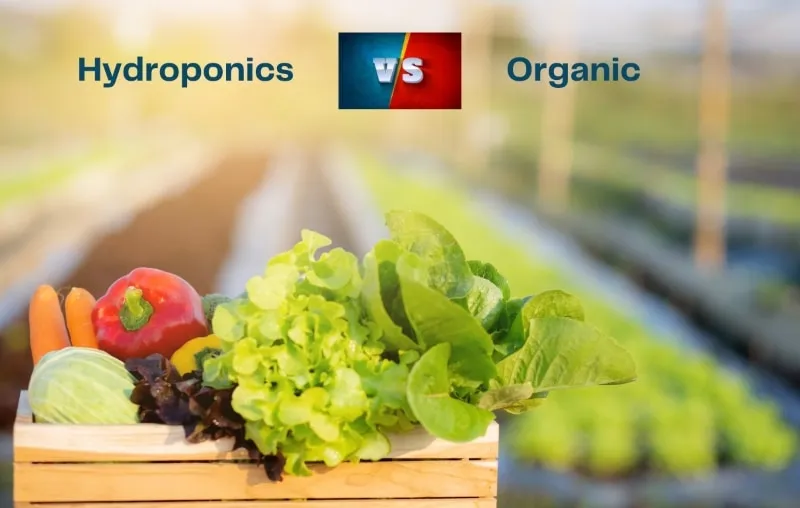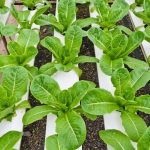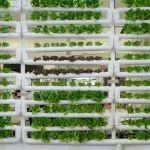Growing your own plants using hydroponics can be a rewarding and efficient way to nurture your seedlings. However, one crucial aspect of successful hydroponic gardening is knowing when to transplant your seedlings into the hydroponic system. This important step could make a significant difference in the health and productivity of your plants.
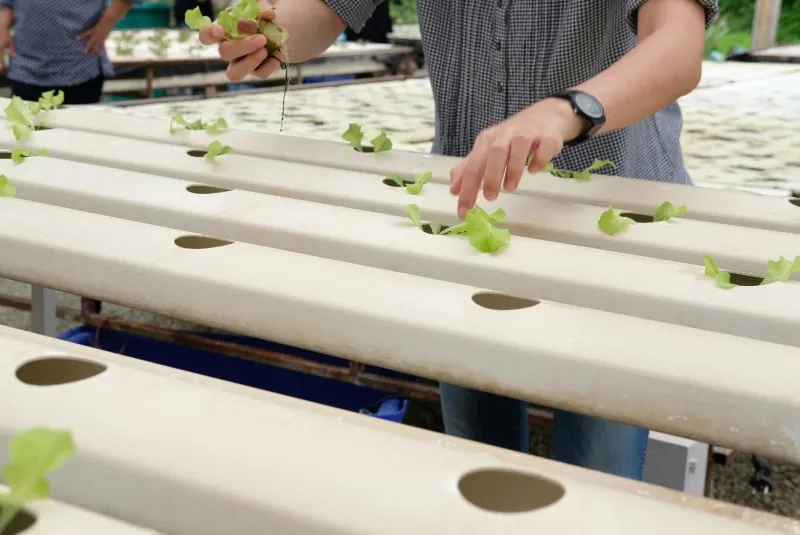
When it’s time to transplant, ensure your seedlings are at least three inches tall and have developed true leaves. This is vital because moving plants from a soil environment into a hydroponic system can come with risks. Additionally, the age of seedlings can affect the ideal transplant timing, with many experts recommending around four weeks old seedlings for hydroponic transplantation.
By paying close attention to these factors, you’ll give your hydroponic seedlings the best chance at thriving and yielding impressive results. So, as you embark on this innovative gardening journey, remember that proper timing and care while transplanting are essential for success. Happy gardening!
- Can You Transplant Seedlings Too Early or Too Late?
- When to Transplant Seedlings to Hydroponics
- How Big Should Seedlings Be Before Transplanting?
- How To Transplant Seedlings To Hydroponics
- Avoiding Hydroponic Transplant Shock
- Choosing the Right Container and Growing Medium
- Proper Nutrients and Watering
- Ensuring a Successful Hydroponic System
- Additional Tips
- Conclusion
Can You Transplant Seedlings Too Early or Too Late?
Yes, you can transplant seedlings too early or too late. Doing it too early can put them at a greater risk of dying from factors such as late spring cold snaps. Even hardy seedlings are likely to die if the temperature goes below freezing for a significant amount of time. It’s always best to wait until conditions are right before transplanting your seedlings to hydroponics.
When transplanting seedlings, it’s important to pay attention to some key factors:
- Temperature: Ensure your hydroponic system’s water and ambient temperature are appropriate for your seedlings. For most plants, a water temperature of 68-72°F (20-22°C) is considered optimal.
- Root development: A strong root system is essential for a successful transplant. Make sure your seedlings have developed adequate roots before transplanting them. Consider using rooting hormone on transplants to encourage fast root growth.
- True leaves: Your seedlings should have their first set of true leaves, which grow shortly after the cotyledons. The true leaves help the seedlings generate energy through photosynthesis and indicate that they’re ready to be transplanted.
To minimize transplant shock, consider the following tips:
- Gradual adaptation: Gradually introduce your seedlings to the hydroponic environment by placing them in the system for short periods and increasing the duration over a few days. This process is called hardening off where the seedlings are gradually exposed to the harsher outdoor environment from the gentle controlled environment indoors.
- Water quality: Make sure the water in your hydroponic system is clean and free of harmful pathogens or chemicals.
- Nutrients: Start by providing a slightly reduced nutrient concentration in the water and slowly increase to full strength over a week or two.
Similarly, don’t transplant seedlings when they’re close to the flowering stage or when they have just germinated, as you’ll be reducing their survival chances. Even if they do survive, the growth rate in the hydroponic system will drastically reduce because they will take longer to recover from hydroponic transplant shock.
Leaving it until too late often results in crowded seedlings, especially if you use small starting container wells like the ones in an egg carton.
Following these guidelines can help ensure your seedlings have a smooth transition to the hydroponic system and increase the chance of a successful transplant.
When to Transplant Seedlings to Hydroponics
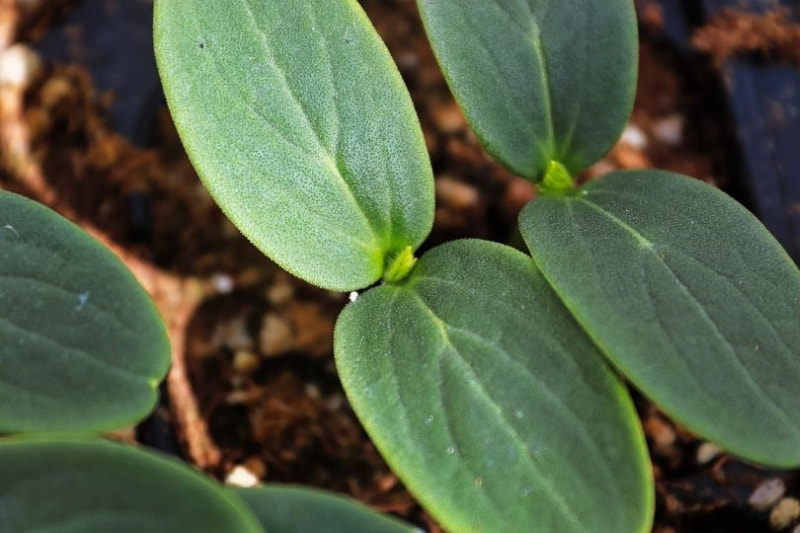
True Leaves
Wait to transplant your seedlings into a hydroponic system until they have developed a few true leaves. You can ensure fast growth of healthy seedlings by using a heat mat. True leaves appear after the initial smaller set of cotyledon leaves, which can sometimes be hard to spot. You should usually transplant seedlings when they have two or three sets of true leaf growth and are about three inches tall.
Related: Learn how to use a heating mat for seed germination to speed the process up.
Root System Development
Before transplanting your seedlings into a hydroponic system, pay attention to their root development. A healthy root system is crucial for a successful transition from soil to hydroponics. Make sure the roots are strong and well-established, and that the seedlings have reached a height of around three inches. This will ensure they are capable of handling the move to soilless mediums.
Weather and Temperature
Although hydroponic systems can be used in a variety of climates, it is essential to monitor the weather and temperature when transplanting seedlings into hydroponics. Ensure that you provide an optimal growing environment for your plants. Different plants have varying temperature requirements, so be sure to tailor your hydroponic system to accommodate the specific needs of your seedlings.
Remember to keep the temperature consistent, especially during the initial stages of growth, as fluctuations can negatively impact plant development. Maintaining an ideal growing environment will help your seedlings thrive as they transition into their new hydroponic system.
In conclusion, the right time to transplant seedlings into hydroponics depends on several factors, such as the development of true leaves and a strong root system, as well as weather and temperature conditions. By closely monitoring these aspects, you’ll be well-prepared to successfully transition your seedlings into a hydroponic system.
How Big Should Seedlings Be Before Transplanting?
When you’re preparing to transplant your seedlings into a hydroponics system, timing is crucial to ensure their success. So, how big should your seedlings be before you make the move? Let’s break it down.
First, observe the seedlings’ leaves. The general rule is that when the seedlings have developed three to four true leaves, they are large enough for transplantation. Remember that the first leaves to emerge are the cotyledons, and they will look different from the true leaves that develop later.
In addition to the leaves, consider the height of your seedlings. They should be at least 2 inches tall before transplanting, as this indicates that they have established roots and are sturdy enough for the process.
Lastly, let’s talk about the hardening-off process. Gradually exposing your seedlings to outdoor light, cooler temperatures, and wind conditions for 7 to 14 days before transplantation helps them adapt to their new environment and improves their chances of success. This prevents your seedlings from experiencing shock after being introduced to the hydroponics system.
How To Transplant Seedlings To Hydroponics
Preparing the Hydroponic System
So you’re done germinating hydroponic seeds into seedlings. Before you begin transplanting your seedlings to, let’s say, a DWC hydroponic system, it’s essential to prepare the system properly. First, ensure the temperature of your hydroponic system is within the optimal range of 65°F (18°C) to 68°F (20°C). Maintaining the right temperature will help your seedlings continue to grow stronger.
Next, set up the air pump by placing the air stone in the reservoir and connecting the tubing. Attach the other side to the air pump and plug it in. You should see bubbles coming out of the air stone, which will help keep your seedlings’ roots moist and stimulate growth.
Transplanting Steps
- Select the right stage for transplanting: Wait for your seedlings to reach a height of at least 7 cm (about 2.7 in) and have at least two true leaves. This is generally when the first true set of leaves has formed, which usually takes around 2 weeks after the cotyledons when grown under optimal conditions.
- Gently remove the soil from the roots: To safely remove the soil from the root mass, follow these simple steps:
- Fill a container with water.
- Submerge the seedlings’ roots in the water, gently working the soil mass loose with your fingers.
- Carefully rinse the roots until they are free of soil.
- Position your seedlings in the hydroponic container: Because the seedling has already grown its roots, place it in the hydroponic container before introducing the growing medium. Spread the roots evenly, ensuring that they don’t clump together. Make sure all the roots come into contact with the growing medium as you fill the container with it.
By following these steps, you’ll be able to transplant your seedlings to a hydroponic system successfully. Happy growing!
Related: Using seedlings isn’t the only way to propagate. Read our guide on how to clone a hydroponic plant before transplanting it to a hydroponic system to finish growing.
Avoiding Hydroponic Transplant Shock
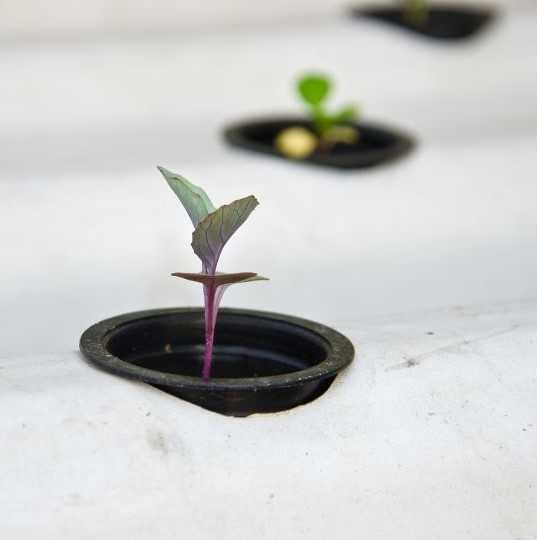
Gradual Climate Adjustment
When transplanting seedlings into a hydroponic system, it’s essential to acclimate them to their new environment gradually. This can help minimize the risk of transplant shock, which could cause dehydration, disease, or damage to your plants. Start by ensuring that the temperature and humidity levels in the hydroponics system are within the suitable range for your seedlings. Avoid transplanting seedlings during extreme weather conditions, as cold or windy days can cause transplant shock, while hot temperatures may require more watering.
To make the transition smoother, you can gradually adjust the seedlings to the new environment before transplanting them. This is called hardening off. For instance, place the seedlings in a shaded area next to your hydroponic system for a few hours each day, gradually increasing the exposure time over a week. This will help them adapt to the new light and temperature levels in the hydroponics system.
Reducing Stress
Minimizing stress is crucial for preventing transplant shock when moving seedlings into a hydroponic system. Here are some helpful tips for reducing stress during the transplanting process:
- Be gentle with the roots: Avoid rubbing or pressing the roots forcefully when transferring the seedlings Carefully lift as many roots as possible to prevent damage and ensure a smooth transition to the new environment.
- Water prior to transplanting: Make sure to give the seedlings plenty of water before transplanting to help the roots take in as much moisture as possible. This can prevent the plant from experiencing excessive stress due to dehydration.
- Use a proper planting technique: When placing the seedlings into the hydroponic system, make sure to follow the correct planting technique for your specific system. This can help ensure that the roots are adequately supported and have proper access to water and nutrients.
By following these guidelines, you can significantly reduce the risk of transplant shock when introducing seedlings into a hydroponics system.
Related: Want to know how to transplant hydroponic plants to soil? That’s another process that risks transplant shock, so read our guide on how to do that successfully.
Choosing the Right Container and Growing Medium
Container Types
When transplanting seedlings to hydroponics, it’s essential to choose the right container to promote healthy growth. Here are some popular container types:
- Net pots: These containers have a mesh-like design that allows the plant’s roots to grow through and access the nutrient solution. They’re perfect for hydroponics because they provide excellent air circulation and drainage.
- Grow baskets: Similar to net pots, grow baskets have openings for roots to grow through. They’re also made of lightweight plastic, making them easy to handle.
- Mason jars: For small hydroponic setups, mason jars can be an inexpensive and space-saving option. Ensure proper aeration and light-blocking to prevent algae growth.
Growing Medium Options
In hydroponics, the growing medium takes the place of soil and supports the plant’s root system. There are several options available, each with its own advantages:
- Coco coir: Derived from coconut husks, coco coir is an eco-friendly and sustainable growing medium. It’s a great choice for hydroponics because of its excellent water retention and aeration properties. Also, it provides a more natural environment for your plants. It’s crucial to use good quality coco coir to ensure your plants are getting the right nutrients and pH level.
- Rockwool: Made from basalt rock and chalk, rockwool is a popular growing medium for hydroponics because it retains water and oxygen well. Be sure to soak the rockwool cubes in pH-adjusted water before placing your seedlings to avoid any shock during transplanting.
- Clay pellets: Also known as hydroton, clay pellets provide excellent drainage and aeration properties. They’re reusable and easy to clean, making them a popular choice for many hydroponic gardeners.
To sum up, when choosing a container and growing medium for your hydroponic seedlings, consider the plant’s needs and your system’s requirements. Experimenting with different options will help you find the perfect combination that suits your garden best.
Proper Nutrients and Watering
Nutrient Levels
To ensure healthy seedling growth in hydroponics, it’s essential to provide the proper nutrient levels in the water. Your plants need a variety of minerals for optimal growth, including nitrogen, phosphorus, potassium, and micronutrients like calcium, magnesium, and iron. To achieve the right balance, it’s recommended to use a water-soluble fertilizer specifically designed for hydroponics. Make sure to carefully follow the manufacturer’s instructions for mixing ratios, and to maintain consistency in your nutrient solution throughout the transplant process.
In addition to adjusting the nutrient levels, it’s crucial to monitor and maintain the pH balance of your hydroponic system. Most plants thrive in a pH range of 5.5 to 6.5. Use a pH testing kit or a digital meter to measure the pH levels regularly, and adjust it with pH up or down solutions as needed.
Watering Techniques
Proper watering is vital for seedlings to establish themselves in a hydroponic system. Before transplanting, heavily water your seedlings to help their roots absorb as much water as possible1. This step prevents them from absorbing water too quickly in their new environment.
In a hydroponic system, the watering techniques may vary depending on the type of system you’re using. Here are some examples:
- Deep Water Culture (DWC): In this method, the plant roots are submerged in the nutrient solution, and air stones or diffusers provide oxygen to the roots.
- Nutrient Film Technique (NFT): The nutrient solution flows continuously over the roots of your seedlings, which are now grown in troughs or channels.
Regardless of the watering technique, it’s essential to maintain appropriate water levels and to ensure that the water is oxygenated and circulated regularly. This helps prevent the development of root diseases and keeps the seedlings healthy as they transition into hydroponics.
Related: Read our guide on everything to know about hydroponics for beginners.
Ensuring a Successful Hydroponic System
Lighting Considerations
To maximize the success of your hydroponic system, it’s essential to consider your lighting options carefully. The right lighting can help improve the growth and health of your plants, while reducing the overall electricity consumption of the system. For optimal plant growth, opt for full-spectrum LED lights, which closely mimic natural sunlight. These lights are not only energy-efficient, but also have a longer lifespan.
Adjust the light intensity and duration to match the requirements of the specific plants you’re growing. A general rule of thumb is to provide 14-18 hours of light per day for most plants. However, it’s important to research the specific light requirements of your plants to ensure their continuous growth and good health.
System Maintenance
Maintaining your hydroponic system is crucial for achieving higher yields and promoting the sustainability of your garden. Here are some key aspects to focus on for optimal system maintenance:
- Water Quality: Regularly monitor and maintain the pH and nutrient levels in your system. Aim for a pH range of 5.5-6.5 for most plants. Use high-quality, water-soluble fertilizers specifically designed for hydroponics to ensure proper nutrient balance.
- System Cleaning: Clean your system components every few weeks to prevent the buildup of organic material and potential harmful pathogens. This includes flushing the nutrient solution, replacing the reservoir water, and cleaning components such as pumps and tubing.
- Pest and Disease Control: Keep an eye out for any signs of pests or diseases. Implement preventative measures, such as using netting and insect traps, and regularly inspect your plants for early signs of problems. If any issues arise, address them promptly with appropriate treatments.
Additional Tips
Sugar Water Treatment
A useful tip to help your seedlings adjust to a hydroponic environment is using sugar water treatment. Sugar water can provide additional energy to the roots of the plants, helping them adapt to the new environment. To make sugar water, simply mix one tablespoon of sugar per gallon of water. When transplanting your seedlings, replace half of the nutrient solution in your hydroponic system with this sugar water mixture. After a few days, resume the regular nutrient solution.
Remember to maintain proper moisture levels in your seedlings before and during the transplant process. Make sure to moisten the starter plugs with a few sprays from a spray bottle every day to ensure the seeds have enough moisture to sprout.
As you follow these tips, be patient and gentle during the transplant process. Ensuring the right timing, using sugar water treatment, and maintaining proper moisture levels will help your seedlings grow strong and healthy in their new hydroponic home.
Conclusion
In summary, transplanting seedlings to hydroponics mainly depends on timing and proper preparation. It is best to transplant seedlings once they develop true leaves and reach a height of at least 3 to 4 inches. This is usually around 2-3 weeks after germination.
As you proceed with transplanting your seedlings to your hydroponic system, remember the importance of proper maintenance. Keep a close eye on the water quality and nutrient levels, ensuring that your newly transplanted seedlings have the optimal environment for growth.
Don’t be afraid to seek additional guidance or tailor your transplanting methods to the specific needs of your plants. With proper care and attention, you can successfully transfer your seedlings to a hydroponic system and watch them flourish. Good luck on your hydroponic gardening journey!

